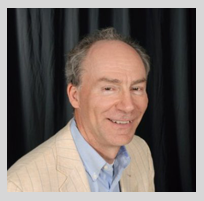Registration for this event has closed.
You can still follow the virtual sessions of the event here: https://app.hopin.com/events/10th-americas-spectrum-management-conference
Stakeholders come together to discuss the most topical issues relating to the management and coordination of spectrum policy across the US, Canada and wider Americas region. MORE INFO >>
Earlier this year, Canada took the decision to join the US in making the full 6 GHz band available for WiFi devices, with the power limits that they are permitting in the band meaning that they are actually freeing up an additional 100 MHz of spectrum compared to their US counterparts. Meanwhile, the future of the band elsewhere around the world is less certain – most countries are still yet to make a decision on this. Whilst part of the industry supports the RLAN usage of this spectrum, another part of the industry supports this band for licensed use. This session will look at what the approach taken across Canada and the US, at the new use cases that opening up this spectrum is going to enable, and at the measures that have been put in place within different scenarios to help avoid interference. It will look at what the decisions that have been taken might mean for various different stakeholders – WiFi providers, incumbent users and users in adjacent bands, other industries also interested in this spectrum and most importantly, consumers.
- How does the decision to make the full 6 GHz band available for WiFi affect different industry stakeholders?
- How do the approaches taken in the 6 GHz band in the US and Canada differ, and how much additional spectrum is realistically going to be made available in each case?
- What is classified as low power indoor (LPI), very low power (VLP) and standard power unlicensed uses of the band, and in what scenarios are each of these uses permitted?
- What measures have been put in place to protect incumbent (eg satellite and fixed links/backhaul) users in the band, and also users in adjacent bands (for example intelligent transport systems in the 5.9 GHz band)?
- What results have been seen in the testing done to date, and to what extent has any interference been seen with backhaul services and others?
- What is the current status with the development of AFC (Automatic Frequency Coordination) standards and what progress has been made on AFC certification? Is this considered to be sufficient for the protection of fixed services?
- What is the timeframe ahead for likely rollout of full commercial services across the band?
Moderator:
Brent Skorup, Senior Research Fellow, Mercatus Center, George Mason University (tbc)
Speakers:
Ira Keltz, Deputy Cheif, OET, FCC
Josette Gallant, Senior Director, Terrestrial Engineering and Standards, ISED Canada
Mark Gibson, Senior Director, Business Development & Spectrum Policy, CommScope
Stacey Black, AVP, Federal Regulatory Affairs – Spectrum, AT&T
Veena Rawat, Senior Spectrum Advisor, GSMA
Alan Norman, Director, Policy, Facebook
 Mark Gibson |
With over 38 years of spectrum management experience, Mark is responsible for developing domestic and international business opportunities for CommScope. In addition to leading technical and business development efforts for numerous wireless and spectrum-related products and services, he has led efforts to address spectrum sharing between Federal government and commercial users. He leads CommScope’s CBRS efforts on the Spectrum Access System/Environmental Sensing Capability and the efforts to develop, test and certify the Automated Frequency Coordination system for 6 GHz unlicensed bands. He is a board member of the CBRS Alliance and an officer on the board of the Wireless Innovation Forum. He is a member of the Commerce Spectrum Management Advisory Committee, where he has also co-chaired working groups related to spectrum sharing and data exchange issues and has testified before the U.S. Congress on spectrum-related matters. He has led spectrum management efforts including spectrum sharing analysis protocols and sharing criteria, as well as development of engineering services and software products. He speaks frequently and has authored several papers on spectrum sharing and relocation and has advised numerous wireless participants in their system design. He is a Life Member of IEEE. He has an amateur radio license and is an instrument-rated commercial pilot. |

